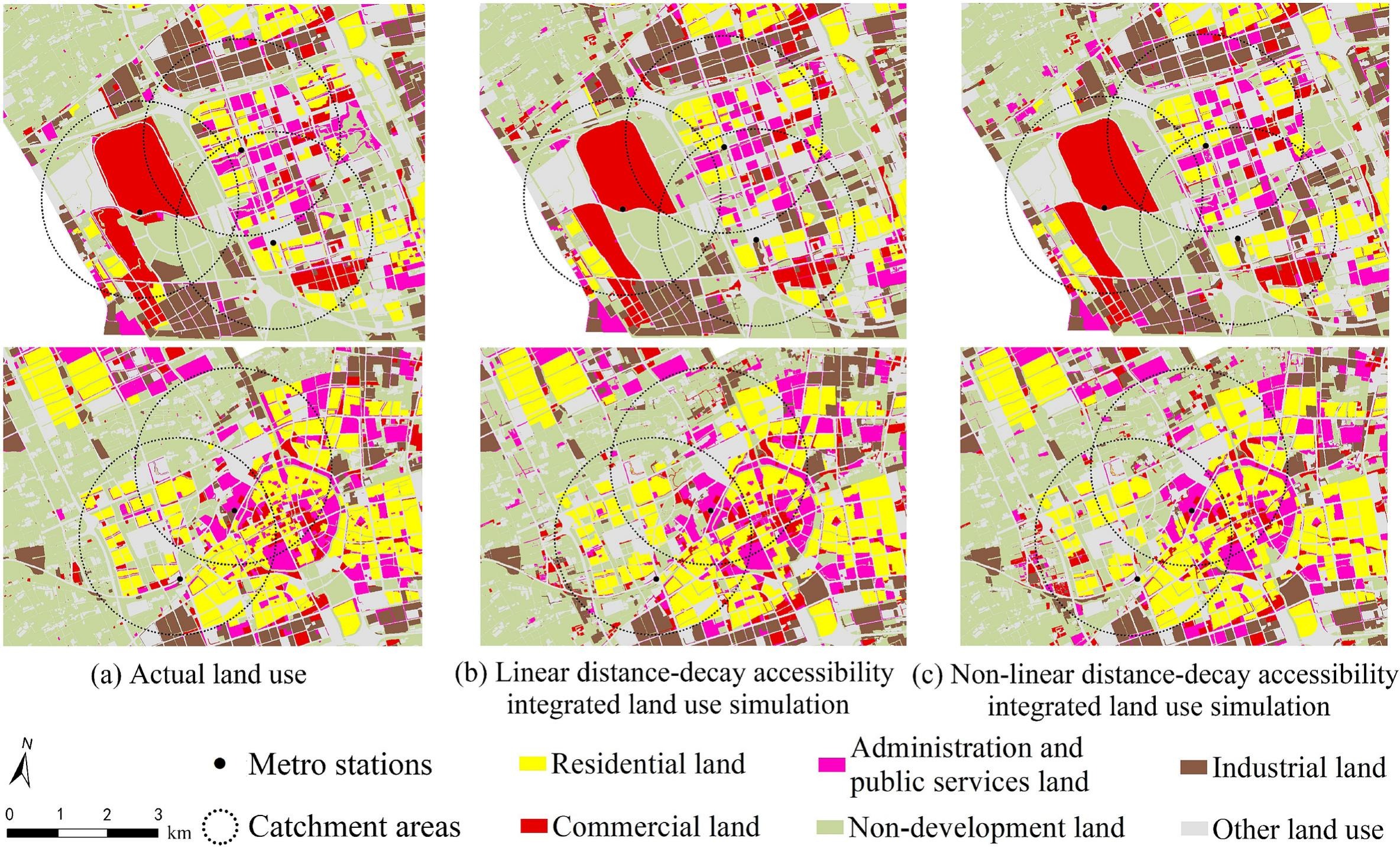Title: The impact of heterogeneous accessibility to metro stations on land use changes in a bike-sharing context

Abstract
The integration of urban rail transit and land use has been adopted as a crucial approach to fostering compact development in cities. Proximity to rail transit stations can increase the probability of land use changes, while few studies have analyzed the spatial heterogeneity of the impact of rail transit on land use changes. This study proposes a distance-decay function to delineate the spatial heterogeneity of metro station accessibility using bike-sharing data and examines the impact of metro stations accessibility on land use changes. Jiading New Town in Shanghai, China, is selected as our study case. By utilizing a non-linear distance-decay function to delineate metro station accessibility as a driving factor for training neural networks in a vector-based cellular automata model, an improvement in simulation accuracy is achieved compared to the model using a linear distance-decay function. This study could help establish more efficient strategies for promoting integrated development of rail transit and land use. The significance of this study lies in the generality of the optimized land use vector-based cellular automata model considering the spatial heterogeneity of metro station accessibility, which could also be applied to other situations, such as considering the accessibility to bus stops and road networks.
Keywords
Rail transit;
Land use;
Spatial heterogeneity;
Bike-sharing;
Accessibility;
Big data
Full Text Download
Journal of Transport Geography
Q.E.D.









